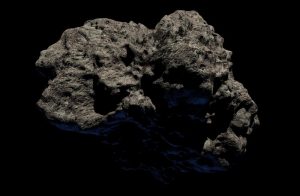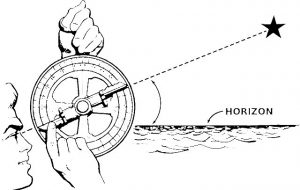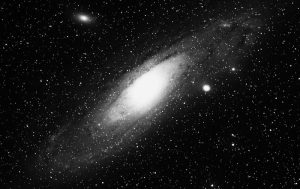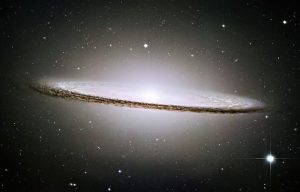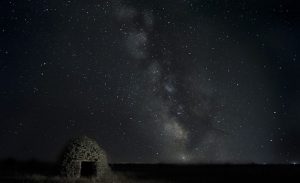Asteroid
Asteroids are rocky, airless worlds orbiting around our sun, but at the same time too small to be called planets. Tens of thousands are concentrated in the main asteroid belt, a vast doughnut-shaped ring between the orbits of Mars and Jupiter. Asteroids that pass close to Earth and deserve close monitoring are called near-Earth objects or NEOs.
What is an asteroid?
An asteroid is a body in space smaller than the planets found in our Solar System that have a rocky appearance orbiting around the sun in an inner orbit to that of Neptune.
Characteristics
The main characteristics that we can mention about asteroids are the following:
- Until 2006, they were also known as planetoids or minor planets.
- Some are deviated and reach orbits that cross those of the major planets.
- Most have an irregular shape, although some are almost spherical and often have holes or craters.
- More than 150 are known to have a small companion moon although some have two moons.
- There are also some binary or double ones, in which two rocky bodies of approximately the same size orbit each other, as well as triple asteroid systems.
- Most of them are located between the orbits of Mars and Jupiter.
- They are named depending on their date of discovery, usually with names obtained from Greek mythology.
Discovery
Its discovery dates back to the beginning of the 19th century, in 1801, when the Italian astronomer Giuseppe Piazzi discovered the asteroid or minor planet called Ceres; later, many more were discovered. Today it is estimated that there are approximately two million asteroids.
The English mathematician and astronomer John Herschel was responsible for giving them the name of asteroids.
Classification
Asteroids can be subdivided into three main categories:
- Carbonaceous (or C-type) asteroids: they make up most of the known asteroids and are located in the outermost parts of the asteroid belt. They are the ones with the least amount of light as their albedo is between 0.03 and 0.09. Their chemical composition is similar to that of the Solar System and they do not have hydrogen, helium and other volatile elements.
- Siliceous (or S-type) asteroids: they make up about 17% of asteroids and are brighter than C-type asteroids. They are made up of ferrous minerals that are mixed with magnesium
- Metal (or M-type) asteroids: the group includes the remaining asteroids and are located in the most central region of the asteroid belt. They are composed mainly of ferrous materials and their luminosity can be compared with those of S-type asteroids.
Some can also be classified as D-type asteroids. They have a very low albedo and their color is quite red, they are strangely found in the main belt, as they are more frequent at distances greater than 3.3 ua from the Sun.
Where they come from?
The Sun and the planets were formed from a large cloud of gas, formed mainly of hydrogen and helium to which small parts of other elements were added. This matter concentrated in the center of this disk, originating the sun. The rest revolved around it forming a disk. Inside the disk the matter formed pieces of different sizes known as planetesimals.
The asteroids then come from matter that was not incorporated into the planets of the Solar System and grouped in the so-called asteroid belt between Mars and Jupiter.
What asteroid will pass near the earth?
According to NASA experts, large asteroids do not approach the Earth regularly, they do so only once or twice a year. This year 2018, we have the CB asteroid, which measures between 15 and 40 meters and will pass close to our planet, approximately 64,000 kilometers.
In addition, an asteroid of about 700 meters and that has a curious form of skull, the TB-145, will fly in the direction of the Earth in November 2018.
Which are the biggest asteroids
- The asteroid Florence is considered to be the largest one that has passed close to Earth. With a measurement of between four and nine meters it approached the planet in about 17 million kilometers.
- The AJ129 had dimensions of between 0.5 and 1.2 kilometers and, as it measures over 140 meters and was considered a “Potentially Dangerous Asteroid“.
- The BX, had the approximate size of a bus floating in space at 26,700 Km/h.
- The AG13 was the size of a 10-storey building and passed between the Earth and the Moon.
Risk of asteroid impact
The constant study of asteroids that pass close to the earth has as its scientific objective, to control the possibility that some of them may collide with the planet. For this reason, their trajectories and distances are continuously studied.
Some asteroids have already collided with the planet and in fact, many scientists attribute the disappearance of dinosaurs from our earth to a collision with an asteroid. Their size is so large that a collision with our planet could cause devastating consequences for life.
Even though the possibility of a collision is very remote, it is still a reality to which we must pay attention, not forgetting to watch by studying their positions with respect to our planet.
Curiosities
Some curiosities of asteroids are:
- The asteroid that fell near Chelyabinsk, Russia, in 2013 had the same amount of energy as 30 atomic bombs from Hiroshima.
- An asteroid 10 meters wide can hit like an atomic bomb.
- They have an average speed of 90,000 km/hour.
- They are made of “leftovers” from the planets.
- The chances of dying from an asteroid impact are less than dying in a car accident, but higher than a lightning strike.
- The amount of asteroid material that hits the Earth each night is approximately 100 tons.
How to cite this article?
Briceño V., Gabriela. (2019). Asteroid. Recovered on 3 January, 2025, de Euston96: https://www.euston96.com/en/asteroid/
